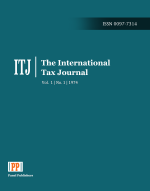Digital gaps and challenges of legal security
Keywords:
digital communication, technological advancement, legal security, cybercrime, artificial intelligenceAbstract
The rapid scientific development witnessed by the world has turned it into a small village, leading to many technological transformations that have impacted various communities and groups. These changes have influenced the patterns of economic, social, cultural, and other aspects of life. The spread of modern technologies, social media, digital applications, and others has posed a significant threat to the social fabric and the balance that ensures legal security. Despite the numerous advantages of the virtual environment on minds and their thinking patterns, as well as the scientific and life approaches they adopt, this is accompanied by many negative consequences that have become substantial threats and challenges to society as a whole. Hence, the importance of information security arises, along with how to employ its diverse methods and various applications to confront these threats. The role of information services and its functions as a profession, with its methodologies, models, and scientific approaches, significantly contribute to protecting all segments of society from becoming victims of many different problems and challenges, including threats from the digital environment.
Downloads
References
1. Dr. Osama Abdullah Qaid, The Criminal Protection of Private Life and Information Banks, Dar Al-Nahda Al-Arabiya, 1994.
2. Roger Clarke, Personalia Page, 2008.
3. Westin, A. F., Privacy and Freedom, New York, Atheneum, 1967.
4. Miller, A., The Assault on Privacy, University of Michigan Press, 1971.
5. Burkert, H., Institutions of Data Protection, 1982.
6. Nugter, A.C.M., Transborder Flow of Personal Data within the EC, Boston, 1990.
7. Michael, J., Privacy and Human Rights: An International and Comparative Study with Special Reference to Developments in Information Technology, 1994.
8. Jerry Berman & Deirdre Mulligan, Privacy in the Digital Age (The Internet and Law): Work in Progress, Nova Law Review, Volume 23, Number 2, 1999.
9. Joan E. Rigdon, Internet Users: They'd Rather Not Share Their Cookies, Wall Street Journal, 1996.
10. United Nations Publications, The Work of the United Nations in the Field of Human Rights, Volume I, New York, 1990.
11. Dr. Saleh Jawad Kazem, Modern Technology and Personal Confidentiality, First Edition, Baghdad, 1991.
12. Dr. Hisham Mohammed Farid Rustum, Penal Law and the Risks of Information Technology, Modern Machines Library, 1992.
13. Dr. Malcolm O. Norris, Privacy and the Legal Aspects of the Information Superhighway, 2008.
14. Ulrich Sieber, Computer Related Crime, 1994.
15. Munir Al-Janbihi, Internet and Computer Crimes and Methods of Combating Them, First Edition, 2008.
16. Ali, Nabil, Arab Culture and the Information Age, 2001.
17. Dr. Amr Ahmed Jasbo, Protection of Freedoms in the Face of Information Systems, Cairo, 2000.
18. Jamal Mohamed Ghaitas, Information Security and National Security, Dar Nahdet Misr, 2007.
19. Dr. Moussa Massoud Arjouha, Terrorism and the Internet, Research from the International Conference at Al-Hussein Bin Talal University, 2008.
20. Forum of Technical and Technological Security, Privacy Protection on Networks, 2010.
Downloads
Published
How to Cite
Issue
Section
License
Copyright (c) 2025 The International tax journal

This work is licensed under a Creative Commons Attribution-NonCommercial-NoDerivatives 4.0 International License.








